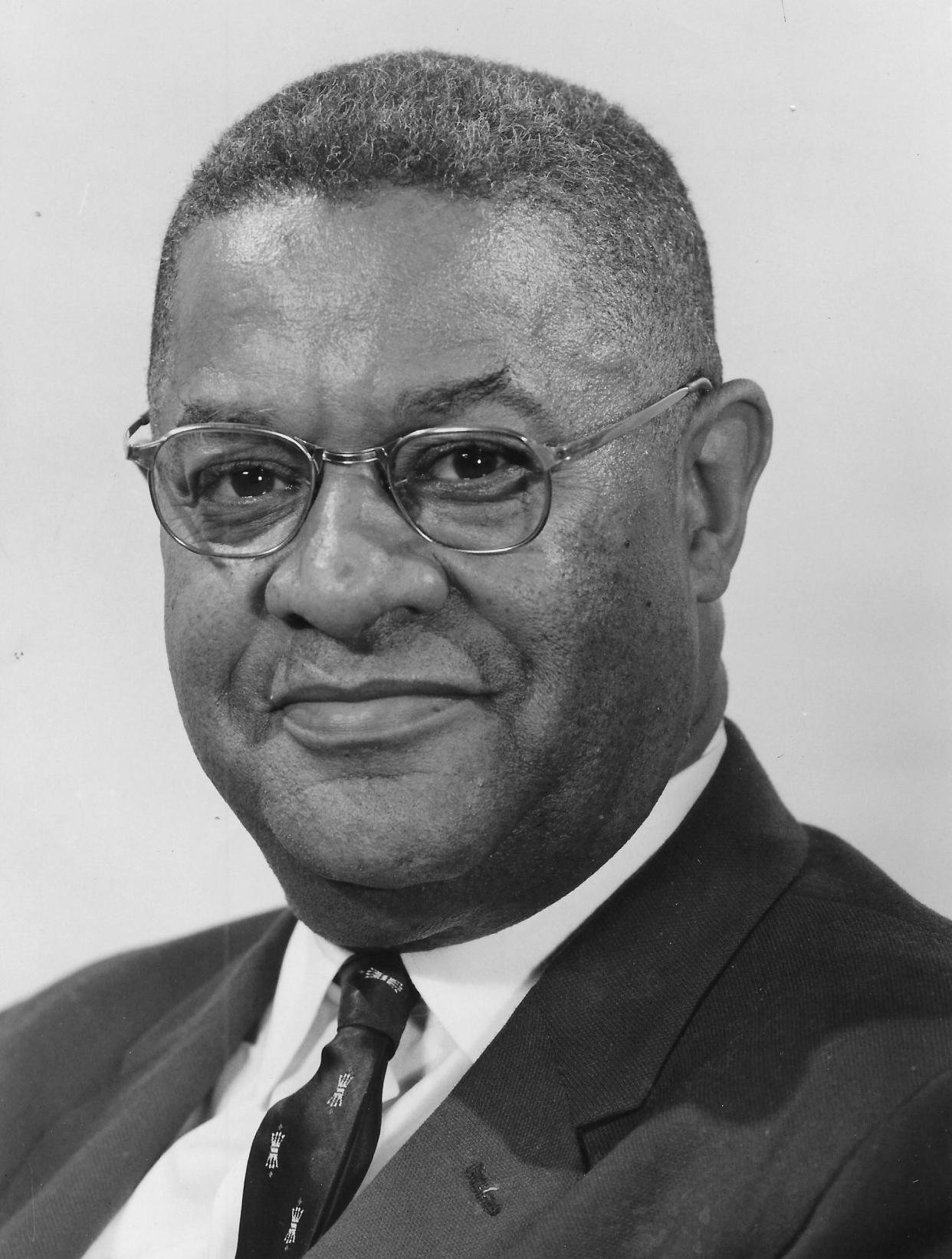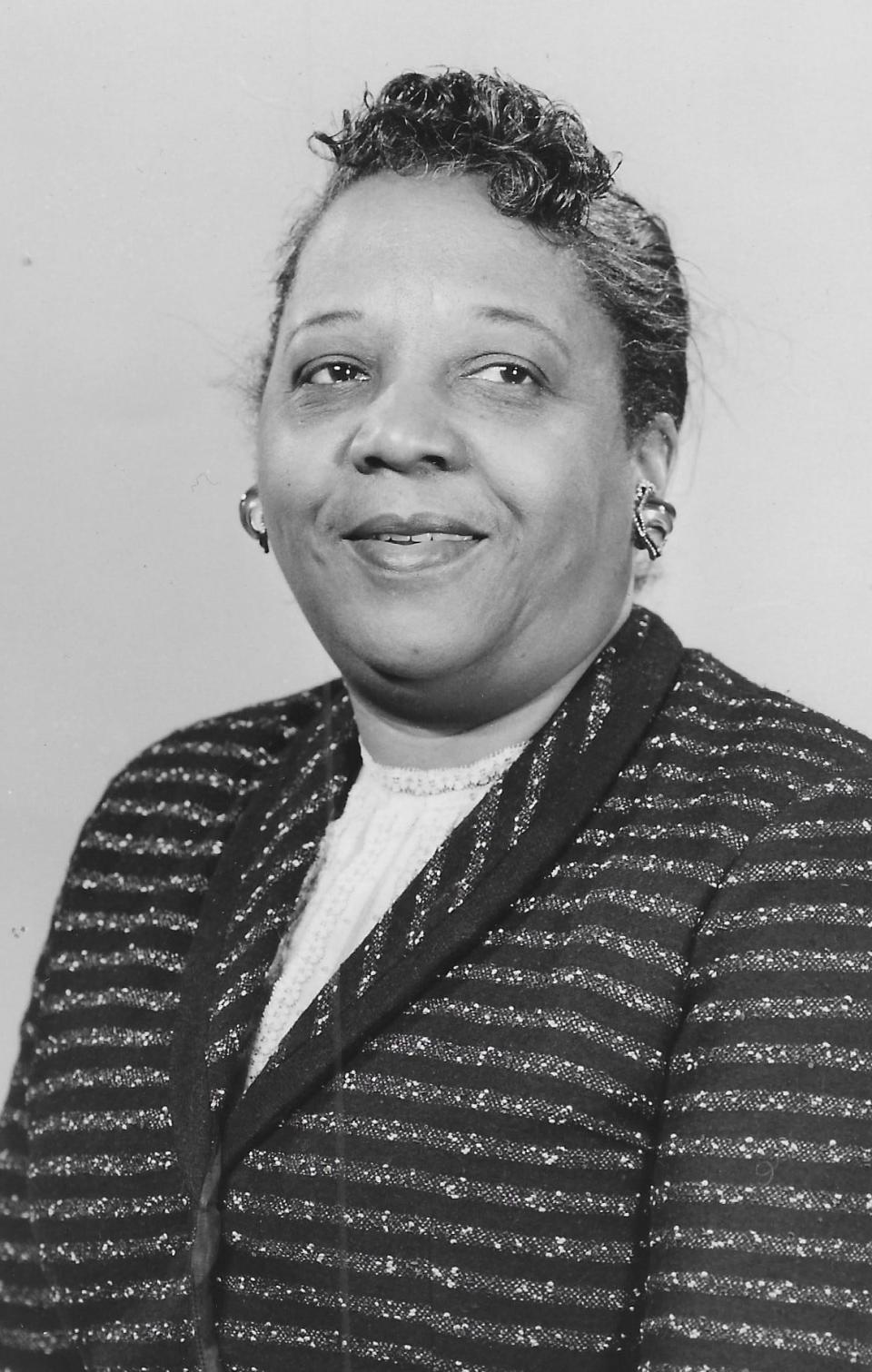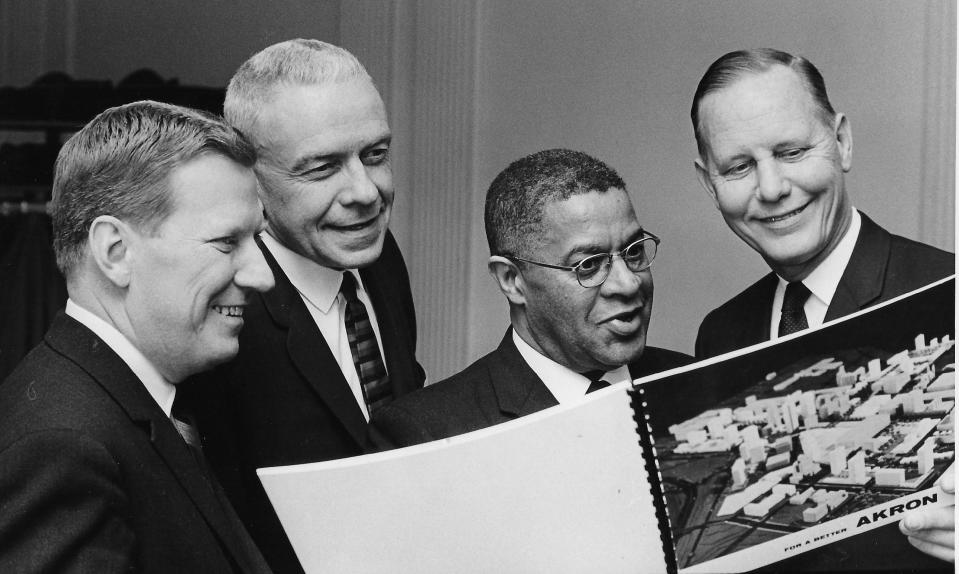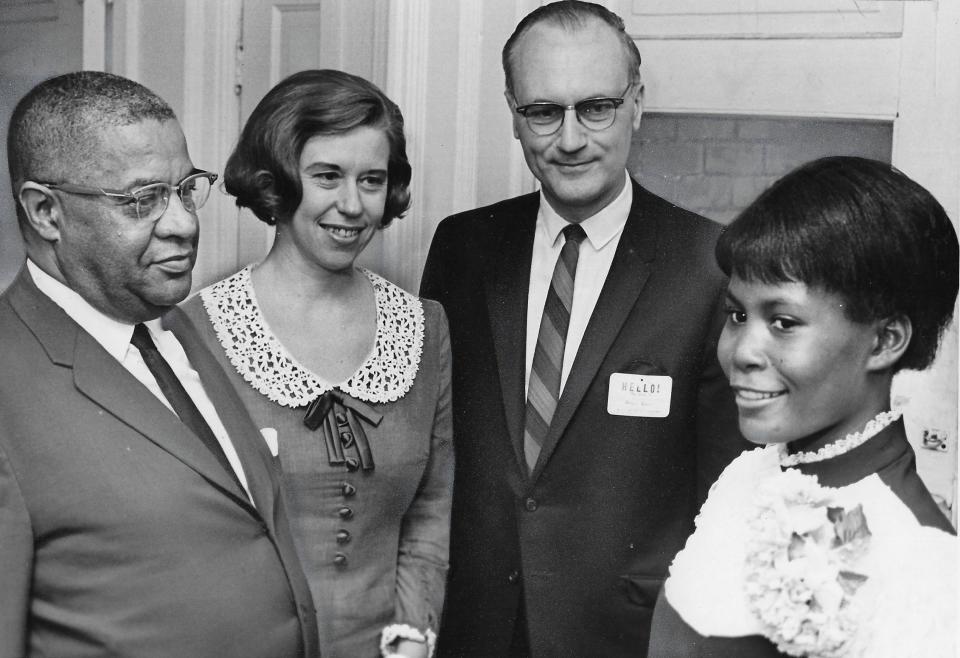Remembering the Rev. Stanley E. Lynton, a respected Akron leader | Local history

The Rev. Stanley E. Lynton was born to be a minister. It was as clear as the bumps on his head.
For nearly 50 years, the Akron pastor was a respected leader, a thoughtful theologian and a reassuring presence in town. His warm smile and friendly demeanor lifted the spirits of friends and strangers alike. When he met people he felt could use a little boost, he gave them peppermint sticks.
Such a sweet gesture.
The only child of Mr. and Mrs. Edward Lynton was born Oct. 12, 1906, in Cincinnati. He was 6 months old when his father died, so his widowed mother took him to Cleveland to live with her sister.
Aunt Carrie Gentile owned a rooming house in a red-light district on the eastern edge of downtown. She was a religious woman and a positive influence, encouraging him to read books and learn as much as possible.
“Be anything you want, but be the best,” she always told him.
When Lynton was a young child, a phrenologist happened to visit the aunt’s home. The old soothsayer carefully studied the shape of the boy’s head and gingerly felt the bumps on his skull, hoping to ascertain personality traits.
“This boy will either preach or teach,” the phrenologist announced.
Lynton joined the Old Stone Church when he was 4 years old.
His faith kept him strong at age 12 when he lost his mother, and again at age 13 when he lost his aunt. Young Stanley moved west to live with another aunt, Lemora Warrick, and her husband, George, in Rocky River.
It was a culture shock to leave Cleveland for the western suburbs.
“I saw the two extremes of life as a youngster, the worst and the best,” he later recalled.
Lynton was the only Black student in his school. The new kid was so popular that his ninth grade class elected him president. In 1925, he became the first Black graduate of Rocky River High School.
He furthered his education at Lincoln University, a historically Black school in Pennsylvania, where he studied literature, language and theology, and earned a bachelor of arts degree in 1930.
The next year proved to be pivotal. He studied at Oberlin College’s School of Theology, got ordained at Triedstone Baptist Church in Cleveland and married Remonia Z. Moss, a Georgia native who had moved to Ohio after graduating from Spelman College in Atlanta.

Akron waiter becomes pastor
A former busboy at the Hollenden House in Cleveland, Lynton moved to Akron in 1931 to work as a waiter at the opulent Mayflower Hotel, a new 16-story building on South Main Street.
He and his wife joined Second Baptist Church at 188 E. Center St., a site that today is part of the University of Akron. The Rev. Royal Allen Jones, who had led the congregation since 1893, was its beloved pastor.
Jones welcomed Lynton as associate pastor in 1933 and served as his mentor. The young preacher continued to work at the Mayflower, indulging appetites during the week and nourishing souls on Sundays.
He stayed at the hotel for 10 years.
When Jones died in 1941 at age 81, the grieving church named Lynton as acting minister. He was promoted to pastor a year later.
Although Lynton had big shoes to fill, the 500-member congregation embraced Stanley, Remonia and their daughters Winifred and Gwendolyn. The family lived at 203 E. Buchtel Ave. near present-day E.J. Thomas Hall.
The minister spoke in a soft voice, but delivered strong messages. The Beacon Journal often reprinted his well-crafted, poetic sermons during the 1940s and 1950s.
“How often the soul of man cries out for revival, for strength — the kind that can come only through meditation with God,” Lynton once sermonized about Psalm 121. “We need God. We need to look unto the hills, standing as sublime, silent guardians over valleys where men live, strive and toil; pointing upwards as mute representatives or symbols of their creator and eternal God. We need to know God.”
In 1950, he was elected president of the Akron Ministerial Association, the first Black pastor to lead the group. He participated in Race Relations Sundays, exchanging pulpits with the pastors of white congregations.
During one Lenten season, he proclaimed: “Ultimate victory in the crises of life can be won only by living the Jesus way. Our lives must be motivated and measured daily by his two simple formulas. First: Do unto others as ye would have them do unto you. Second: Not my will be thy will be done.”
Lynton was active in the community, serving leadership roles in the NAACP, Akron Community Service Center, Interfaith Committee of the Council of Churches, Akron Municipal Parole Board and Mayor’s Civic Unity Committee.
“I see life as a chance to be a servant, rather than a slave,” Lynton said.

Civic leaders welcome minister
In 1961, he was named one of 21 charter trustees of Citizens for Progress, a nonprofit group established to revitalize Akron. His colleagues were some of the most prominent men in town, including Russell DeYoung, president of Goodyear Tire & Rubber Co.; Raymond C. Firestone, president of Firestone Tire & Rubber Co.; Lincoln H. Gries, president of the M. O’Neil Co., J. Ward Keener, president of B.F. Goodrich Co., M.G. O’Neil, president of General Tire & Rubber Co., E.J. Thomas, chairman of Goodyear Tire & Rubber Co., and John S. Knight, editor of the Beacon Journal.
The group met at the Mayflower, where Lynton had worked two decades earlier. In 20 years, he had moved from the waitstaff to sit at the table with other civic leaders.
Lynton appreciated how his adopted hometown had made strides in racial relations.
“There is still a lot of prejudice, but you can get what you’re willing to fight for here,” he said.
Only two pastors served Second Baptist Church during an 85-year span, a remarkable example of stability at a time when most ministers averaged five years with congregations.
“A church can get itself organized to the point where its constitution means more than its people,” Lynton explained to the Beacon Journal in 1971. “Preachers can become so sophisticated that they’ll preach their doubts rather than their convictions. Either way, you’re in trouble. Get a warm church with a preacher with convictions, however, and the man’s liable to stay in the pulpit.”
Lynton shepherded the congregation to a new home after the University of Akron acquired the old church in 1973. He supervised the 1975 dedication of a $500,000 building at 690 S. Main St., where the church stands today.

‘Good, bad or indifferent’
The pastor retired in 1978 after devoting his ministerial career to one church.
“This has been my only pastorate: Good, bad or indifferent,” he said with characteristic humility.
He spent nearly 45 years at Second Baptist, including 36 as pastor, conducting thousands of baptisms, weddings and funerals, and dispensing zillions of peppermint sticks.
More than 700 people attended Lynton’s retirement dinner at Tangier, including U.S. Rep. John Seiberling, Ohio Sen. Oliver Ocasek, Akron Municipal Judge Joseph Rouhlac and Mayor John S. Ballard. Lynton said his goal had always been “to help folks.”
“Some men major in one thing, such as evangelism or pastoral work,” Lynton said. “I’ve enjoyed loving folks in good times and bad times. You see, if folks love each other, they’ll work together. Then there’s no limit to what they can do.”
Four months after retiring, the pastor lost his wife. Remonia Lynton died at age 70 on Sept. 17, 1978.
The widowed minister moved to Cuyahoga County to live closer to his daughters, who taught in Cleveland.
The Rev. Stanley E. Lynton, 76, passed away July 16, 1985, in Shaker Heights. He was buried next to Remonia at Glendale Cemetery in Akron.
“No matter what help is needed by mankind, be it physical or mental, in temptation, in sorrow, in doubts and perplexities, God is our ever-present and available refuge,” Lynton once sermonized.
“For his vigilance is unwearied, his defense invisible and his power unlimited.”
Mark J. Price can be reached at mprice@thebeaconjournal.com
Local history: 101 trailblazers who achieved famous firsts in Akron Black history
Local history: Akron landmarks in Black history
This article originally appeared on Akron Beacon Journal: The Rev. Stanley Lynton was influential leader in Akron

